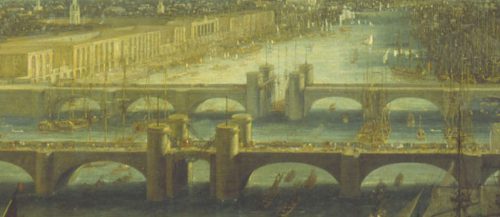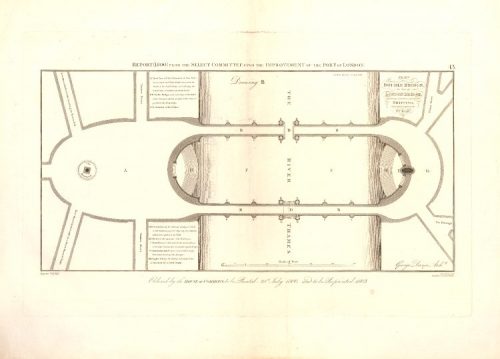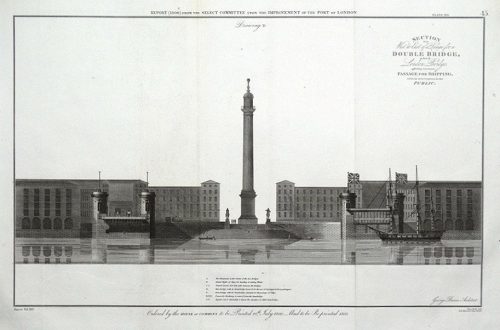When Old London Bridge was finally destined for the knackers yard, one of the many replacement proposals would have seen two mighty bridges constructed side by side. It was 1799 that a competition was held to design a replacement for the 600 year old London Bridge, and while John Rennie’s scheme won, there were many alternative proposals.
Visually, the iron span bridge would have been amazing, but in terms of impact on the area, by far the greatest would have been a plan by the noted architect, George Dance.
He called for two bridges to be built, one for city-bound traffic and the other for Southwark-bound traffic. Two small drawbridges in the middle would have allowed taller sailing ships to pass through, although their size seemed rather restrictive based on drawings.
In theory, having two bridges and two drawbridges could have allowed at least one bridge to be kept open at all times when the other is allowing ships to pass through.
This overcame a major problem for any plans, as the government had stipulated that at least 65 feet of clearance should be offered by the replacement bridge, but this then meant a potentially sizeable slope as the bridge rose up to the required height in the centre of the river.
Having two drawbridges meant a much lower bridge would be necessary, which saved money in construction costs, and leather on the shoes of people labouring over the bridge each day.
Sadly, the mandated height requirement killed the plan dead, in favour of more conventional, if higher stone bridges.
However, as dramatic as the bridges would have been, it is arguably the changes on either side of the bridges which would have had the biggest impact.
On the south side, currently, a tight collection of roads running around a railway station would have been a wide semi-circular plaza with a tall pillar in the middle. The City of London side though would have been radical — a much larger plaza with the Monument standing proud in the centre.
Where today the Monument is surrounded by tall buildings and almost lost from sight, it would have been the landmark of the area.
Even if this version of London Bridge had survived to modern-day — as the Rennie one failed to achieve — it is probable that we would know the area less for the double bridges on the Thames than for the massive open space that lead to the bridges.
And London would have had three drawbridge-style bridges over the Thames.
Although his scheme for London Bridge failed to win approval, his signature can be seen elsewhere in the City — for example, the medieval looking stone facade of the Guildhall is one of his.










